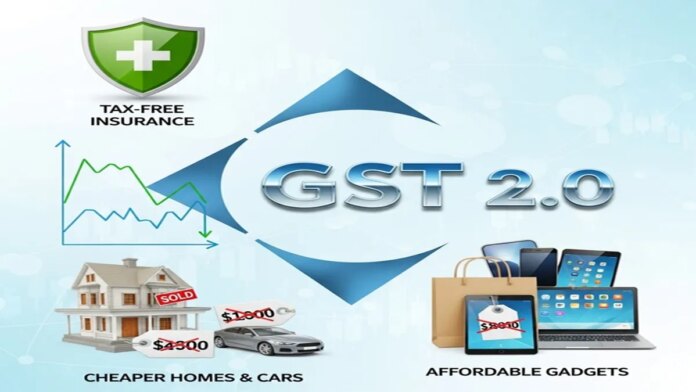To make India’s tax system simple and transparent, the government has announced historic reforms in the 56th GST Council meeting. The four tax slabs applicable till now have been reduced to only two major rates – 5% and 18%, while a special 40% slab has been introduced for luxury and harmful products or ‘sin goods’. These reforms are being considered as a big relief to the middle class and a step to promote consumption before the festive season.
The impact of these announcements will be directly seen on households, vehicle sales, insurance, health, real estate and everyday purchases. Let us understand in detail the 10 most important findings of GST reforms:
1. Two-slab indirect tax structure for most goods
Now consumers and businessmen will not have to deal with the hassle of four different GST rates. Now only two rates – 5% and 18% will be applicable across the country. Experts believe that this will make compliance easier, disputes will reduce and the tax system will become more transparent.
ALSO READ56th GST Council Meeting: Life and health insurance premiums get full GST exemption, big relief for policyholders
2. 40% tax on luxury products and ‘sin goods’
The GST Council has kept a special 40% slab from a social and health point of view. This slab will apply to cigarettes, pan masala, sugary drinks and expensive luxury products. Its purpose is to maintain revenue and discourage harmful consumption.
3. Common household items will be cheaper
Tax on everyday items like hair oil, soap, toothpaste has been reduced to 5%. This change will directly affect the pocket of every family and will give relief in consumer spending.
4. Big relief on food items
Roti-Paratha have now become completely tax-free. At the same time, milk products like cheese, ghee, butter and breakfast items like cornflakes, biscuits will now be available at only 5% GST. This is likely to reduce food inflation and give a big benefit to rural-urban consumers.
5. Promotion of affordable housing schemes
The construction sector has also got a big support. GST on cement has been reduced from 28% to 18%. This will directly affect the cost of building a house. Experts believe that this will increase the demand in real estate and give impetus to affordable housing schemes.
» Read More


